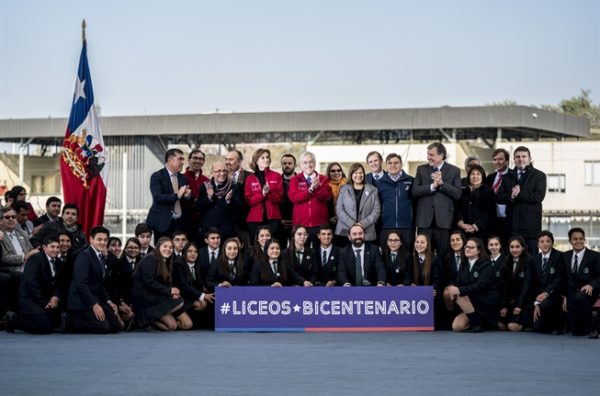Reforming an Education Model in Chile that Segregates

By Andres Kogan Valderrama
HAVANA TIMES – The latest announcement from Chile’s minister of Education, Professor Marco Antonio Avila, about budget cuts and the beginning of an assessment process of the Bicentennial School program, is good news for those of us who believe in really strengthening the public education system in Chile.
Ever since the program began in 2010 under Sebastian Piñera’s government, the Bicentennial School program came in response to a neoliberal idea about education which had focused on competition between schools and a standardized curriculum and assessment process, creating high levels of school segregation and apartheid, which placed Chile among the worst in the world.
That’s why the Bicentennial School program has sought to focus its economic and technical resources on certain schools of excellence across the country, which would allegedly allow the most talented students from vulnerable groups to have access to quality education, shutting down the opportunity to create equal funding for every school with public support.
The problem with this program is that after running for over 10 years in Chile, it could be creating new regional segregation as it still operating within an economic approach to education, and regardless of the brutal inequality between public and private education.
People who have defended this program and have screamed bloody murder with what Minister Avila pointed out, have said that this decision means dropping the level of education, damaging the quality, as these Bicentennial Schools have better results in standardized exams and school attendance, which is true.
Nevertheless, they forget that this program was born within a context where a Law for Inclusion didn’t exist, and so they are schools who have selected, expelled, and left students outside, despite receiving public funds, using the argument they are schools of excellence, just like what happened in the past with the so-called “emblematic” high-performing schools.
As a result, we need to look at the 320 Bicentennial Schools that exist today and see whether these establishments are in fact repeating a culture of school segregation and discrimination, that continues to exist even with the Law for Inclusion, but a lot more subtly.
Therefore, the assessment of a program like this – the Bicentennial Schools, in this case – can’t be viable if it discriminates students, with the objective of getting the best scores in standardized tests, which also goes together with the concentration of the best teachers at these establishments, which creates first-class and second-class schools in the same area.
Meanwhile, we should also ask the extent to which these establishments are contributing in terms of curriculum, not only in how they teach, but what they are teaching, in both comprehensive and innovative educational projects, which take on today’s challenges. Or on the contrary, are they just educational centers to train children up in certain subjects or content (math, language and science) that impoverishes the learning process?
If we don’t ask these questions, we will continue to be stuck in an individualist and out-of-touch educational paradigm, sold by the government of the hour in 2010 and by mass media at the time as a success, but time has shown that it has only served to increase malaise in society and to perpetuate inequality.
The need to move towards a different education system is in the works, although Chile’s most conservative groups want to carry on with what we have and are rejecting any attempt for greater social and school justice. They cling onto authoritarian and commercial ideas about education, that deny the opportunity to build a more inclusive, participatory and collaborative society.
It seems that certain groups continue to reject what has happened in the past 20 years in Chile, and that even though the proposal for a new Constitution was rejected, this doesn’t detract in any way from the challenge it posed to different fields in Chile, where criticism of the education system was at the heart, and had a lot of support from the general population.
That said, public education for every Chilean, without exclusion and measures that only aggravate the problem, needs to be at the heart of debate in a very serious way, without shortcuts, with education communities and with the greatest amount of evidence possible.





